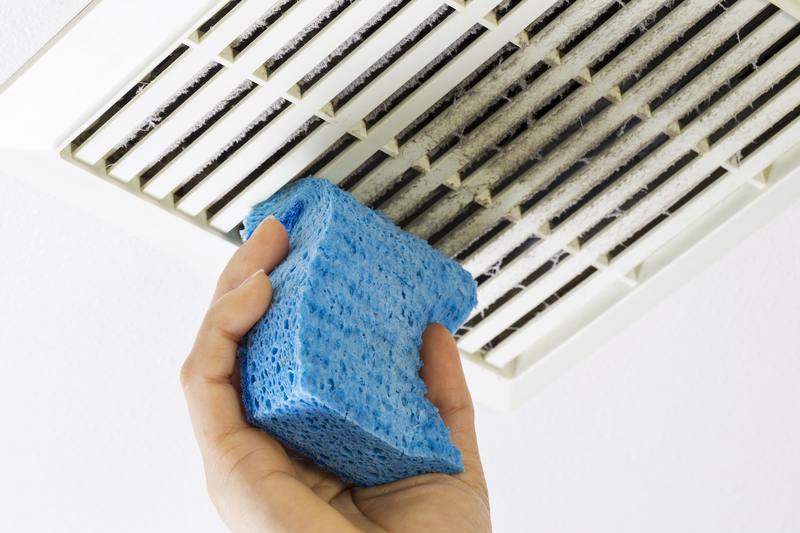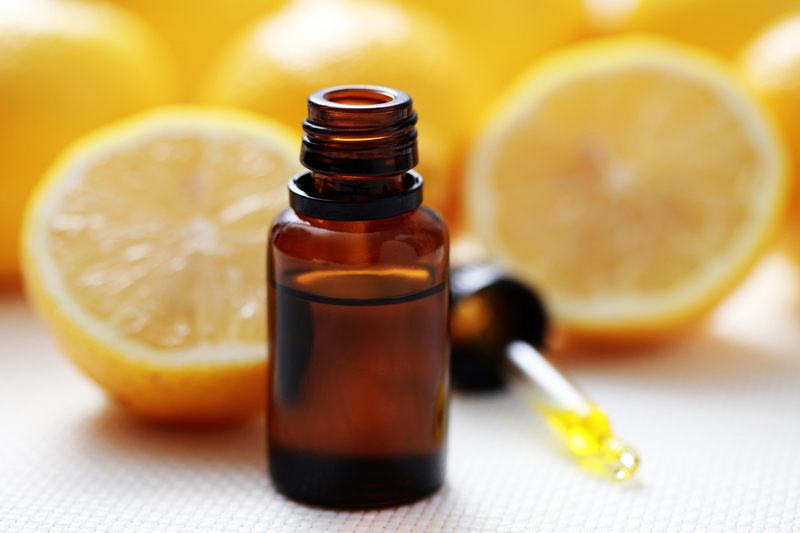Achieve Luxurious Velvet Curtain Cleanliness with Safety Tips
Posted on 26/05/2025
Achieve Luxurious Velvet Curtain Cleanliness with Safety Tips
If you are looking for a way to bring out the best in your velvet curtains without damaging their rich texture, you've come to the right place. Luxurious velvet hanging in your living space makes an unforgettable statement. But to keep that lavish look, regular and proper cleaning is essential. Not sure where to start? This comprehensive guide will show you how to achieve luxurious velvet curtain cleanliness, packed with expert safety tips to preserve their plush beauty for years.

Why Velvet Curtains Need Special Attention
Velvet is a unique fabric characterized by its pile--tiny, raised fibers that create a soft, luscious feel and an eye-catching sheen. However, this very pile makes velvet susceptible to dust, dirt, and damage if not cared for appropriately. Using the wrong cleaning method may result in dullness, flattening, or even irreversible harm to your precious curtains.
- Velvet is prone to crushing and water marks.
- Improper cleaning can cause discoloration or shrinkage.
- High-moisture environments may encourage mildew or mold.
To maintain the luxurious appearance of velvet curtains, you need to apply cleaning techniques that are both effective and safe for this fabric type.
Understanding Your Velvet: Types Matter
All velvet is not created equal. Identifying your curtain's velvet type is crucial for choosing the safest and most effective cleaning method:
- Silk Velvet: Rare and ultra-luxurious, requires only professional cleaning or extremely delicate at-home care.
- Cotton Velvet: Plush and sturdy, but can shrink or distort if not cleaned carefully.
- Synthetic Velvet: Made from polyester, nylon, or a blend. More resilient and sometimes suitable for gentle hand-washing.
- Crushed or Embossed Velvet: Has a patterned or intentionally crushed surface; special care needed to avoid losing the unique texture.
Check your curtain's label for recommended cleaning guidelines. If there's no care label, err on the side of caution and treat it as delicate.
Regular Maintenance: Keeping Velvet Curtains Fresh
Before diving into deep-cleaning, know that regular, gentle care is the first line of defense in achieving long-lasting velvet curtain cleanliness.
Weekly Dusting and Vacuuming
- Vacuum with Care: Use your vacuum's upholstery attachment or a handheld vacuum on a low setting. Always move the nozzle in the direction of the velvet's nap (the way the fibers naturally lie).
- Soft Brushing: Use a soft, clean cloth or brush to gently sweep dust and pet hair from the curtains, again following the nap.
Spot-Cleaning Small Stains
- Act Quickly: If something spills, gently blot (don't rub) with a clean, dry cloth to absorb as much liquid as possible.
- Use Lukewarm Water: For minor stains, slightly dampen a white cloth with tepid water and gently blot the spot. Never saturate the fabric.
- Test First: Always test any cleaner or water on a hidden area to prevent discoloration.
Deep Cleaning Velvet Curtains Safely
Despite regular upkeep, velvet curtains occasionally need a deeper cleaning to keep them looking truly luxurious. Here's how you can achieve this while minimizing risks:
1. Check Manufacturer's Recommendations
Most crucial: always start by reading the manufacturer's care label. Some velvets--especially silk--should only be professionally cleaned. If your curtains say "dry clean only," don't risk home washing.
2. If Machine Washing Is Allowed
- Place curtains in a mesh laundry bag for extra protection.
- Wash with cold water on a delicate cycle, using a gentle, dye-free detergent.
- Never use bleach, harsh chemicals, or fabric softeners.
- Spin at the lowest setting possible to avoid fiber crushing.
3. How to Hand Wash Velvet Curtains
Hand washing is the safest home method for many velvet types, especially cotton or synthetic blends.
- Fill a tub or deep basin with lukewarm water. Mix in a small amount of gentle detergent.
- Place curtains in the water and gently swish; avoid twisting or wringing.
- Rinse thoroughly with cool water until all detergent is gone.
- Press water out gently (do not wring!). Lay flat on a towel to blot excess moisture.
4. Professional Dry Cleaning
For silk velvet curtains or if the label expressly recommends it, trust a reputable dry cleaner with experience in handling velvet. When in doubt, professional cleaning is the safest bet for delicate or valuable curtains.
5. How to Steam Clean Velvet Curtains
A clothes steamer is a wonderful tool for refreshing velvet curtains and removing wrinkles while being much safer than traditional ironing.
- Hang curtains up securely.
- Using a handheld steamer, keep it two to four inches away from the fabric surface.
- Gently steam in the direction of the nap, avoiding saturation.
- Let dry completely before re-touching or closing the curtains.
Tip: Never use a hot iron directly on velvet, as it destroys the texture.
Essential Safety Tips for Cleaning Velvet Curtains
To achieve luxurious velvet curtain cleanliness with safety, always keep these top tips in mind:
- Never wring or twist: Doing so may crush and permanently mark velvet fibers.
- Keep away from direct heat: After cleaning, do not place curtains in a tumble dryer or near radiators. Air-dry on a flat surface or hang them in a well-ventilated, shaded spot.
- Test every cleaner: Even water can stain some velvets. Test any cleaning product or method on a small, inconspicuous patch first.
- Do not rub stains: Rubbing drives stains deeper and damages the nap. Always blot gently.
- Manage moisture: Velvet does not like excess water. Only ever slightly dampen for spot cleaning, never oversaturate.
- Avoid sunlight: Drying or hanging velvet in direct sun can cause fading.
Extra Tips for Velvet Curtain Longevity
Proper cleaning is just one pillar of maintaining luxury velvet curtains. Here's how to preserve their beauty for decades:
- Rotate and reposition curtains every few months to prevent uneven fading or wear from sun exposure.
- Open and close curtains gently, holding the hem or using tie-backs to reduce stress on the fabric.
- Keep pets' claws and sharp objects away from your velvet to prevent snags.
- Use a humidifier in dry climates to prevent the velvet from becoming brittle and prone to cracking.
Dealing with Persistent Stains?
Sometimes, despite your best efforts, a stubborn mark simply won't budge. What should you do?
- Avoid excessive scrubbing.
- Consider a professional upholstery or curtain cleaner, particularly for large or set-in stains.
- If you must attempt removal at home, try a gentle solution of water and a few drops of baby shampoo--test first!

FAQs: Velvet Curtain Cleanliness Questions Answered
1. How often should velvet curtains be cleaned?
Aim to vacuum or dust weekly. Deep clean every 6-12 months, or more frequently if exposed to high traffic or pollution.
2. Is it safe to use stain removers on velvet?
Avoid commercial stain removers unless labeled safe for velvet. Always test on a concealed area.
3. Why is my velvet curtain crushed or streaky?
This may be from pressure, moisture, or cleaning mishaps. Steam can revive the pile, provided you follow the above safety tips.
4. Can you put velvet curtains in the dryer?
Never tumble-dry velvet. Always air-dry to protect the fabric structure.
Conclusion: Enjoy Impeccably Clean, Safe, and Stunning Velvet Curtains
Achieving luxurious velvet curtain cleanliness doesn't mean risking damage or losing their unique luster. By following these safety-conscious cleaning methods and tips, you'll not only keep your velvet curtains hygienic but also maintain their opulent charm year after year.
Remember: always check your velvet type, use gentle techniques, and prioritize safety! With this knowledge, your gorgeous drapes will be the crown jewel of your decor--pristine, plush, and truly luxurious.
Ready to transform your interiors? Start with these velvet curtain cleaning tips and enjoy a home that feels as glamorous as it looks!




